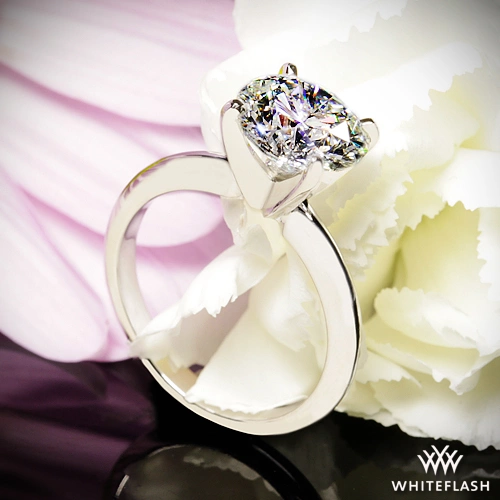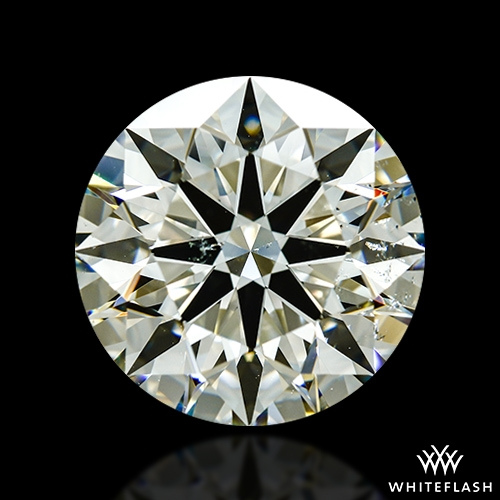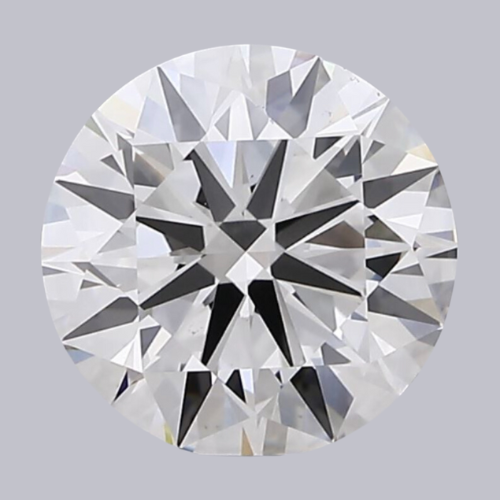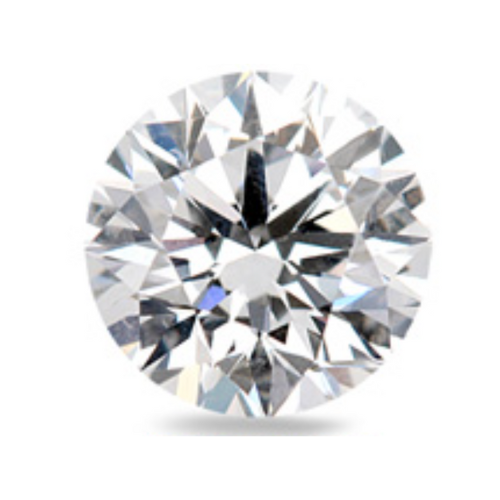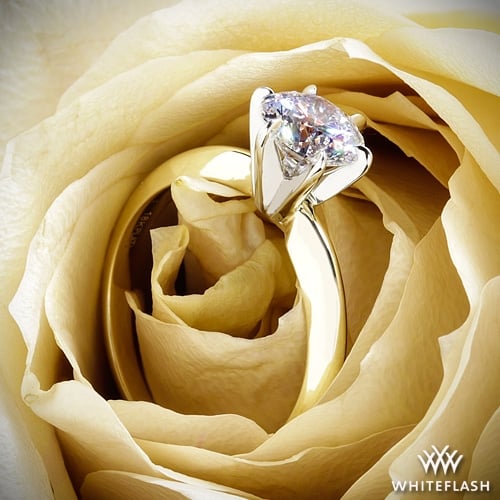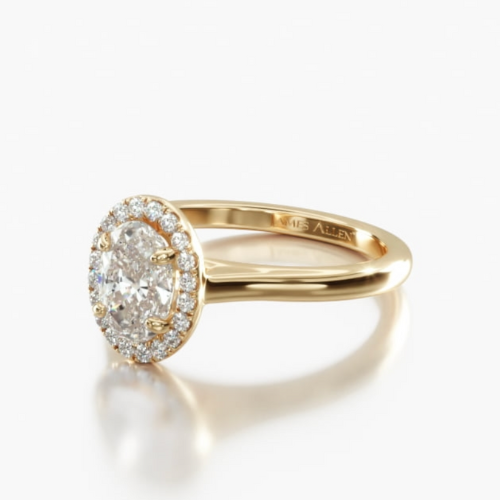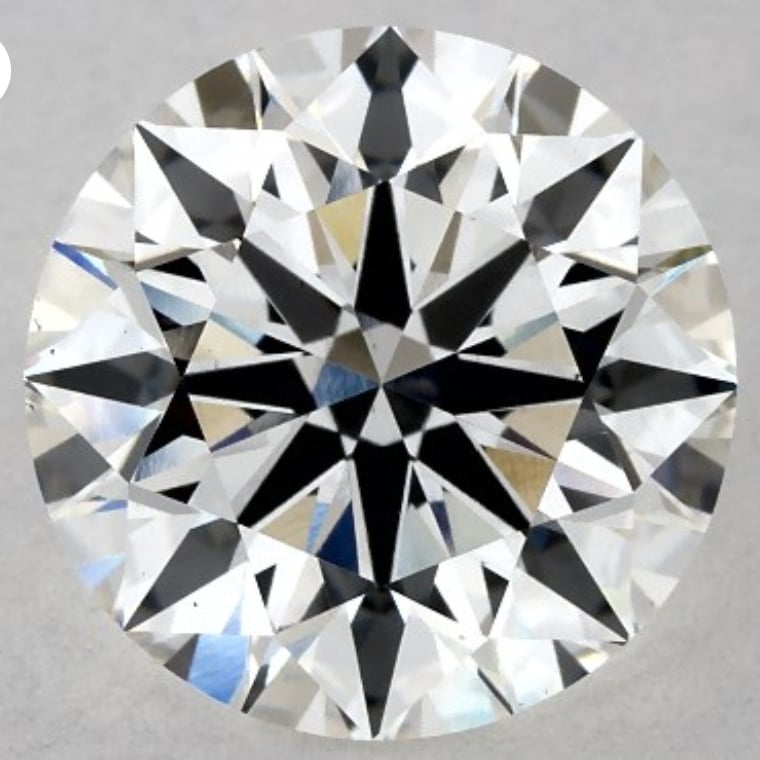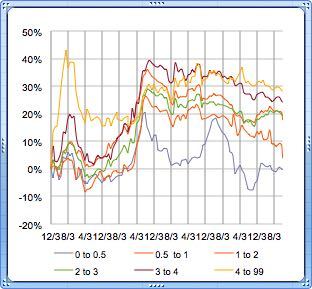If you’re looking to stand out in the crowd, then choosing a 2.5-carat diamond is the right choice.
In the US, the average carat weight for a diamond engagement ring is around 1 carat – a classic size that is the most common to find on the market today. A 2.5-carat, however, is a selection that makes for an impressive and striking deviation. So why go against the industry standard?
A 2.5-carat diamond stands out for a multitude of reasons, the first being that it is a larger diamond, making an unforgettable impression. They’re unique and, if you find the right cut quality, have a striking beauty that’s unmatched. However, like with any diamond, how do you choose the right one?
Picking out the perfect 2.5-carat diamond – and the perfect 2.5-carat diamond ring – involves careful attention to various factors, including cost, cut quality, size, clarity, and color. At PriceScope, our mission is to guide you through this exciting journey, helping to simplify the process of choosing the ideal 2.5-carat diamond that perfectly aligns with your style, budget, and expectations.
Key Takeaways:
- Understanding the Costs
- The Right Cut Quality for 2.5-Carat Diamonds
- 2.5-Carat Diamond Sizes
- Understanding Clarity for 2.5-Carat Diamonds
- 2.5-Carat Diamond Color
- Inspiration for 2.5-Carat Diamond Engagement Rings
- 2.5-Carat Diamond Costs by Shape
- Why is Cut Shape Important?
- Diamond Certification: Should You Consider It?
- Lab-Grown 2.5 Carat Diamonds
- Our Final Thoughts and Recommendations
Understanding the Costs
The cost of a 2.5-carat diamond is dictated by more than just its size. Factors such as cut quality, clarity, color, and shape significantly contribute to the final price. The price range of high-quality natural 2.5-carat diamonds can range greatly, from $10,000 all the way to $75,000.
When buying a diamond, remember this: As carat size increases, the cost per carat also increases due to the rarity of these larger, high-quality diamonds.
Selecting a diamond involves a variety of considerations, with size being just one aspect. In this article, we’ll navigate through the enthralling realm of 2.5-carat diamonds. We will examine everything from cost to cut quality, clarity to color, and provide some inspiration on choosing the perfect diamond shape.
But remember this – you’re not just buying a diamond, you’re investing in a lifelong possession, a possession which has a physical and emotional value that will only increase over time.
During the purchasing process, staying updated with the current market prices is crucial. PriceScope's latest diamond prices chart provides real-time data on 2.5-carat diamonds, helping you make the wisest investment decision. Stay informed and get the best value for your money with PriceScope.
2.5 Carat Diamonds at PriceScope
Here is just a small selection of 2.5-carat diamonds available right now from the trusted and experienced vendors at Whiteflash, James Allen, and Blue Nile.
The Right Cut Quality for 2.5-Carat Diamonds
What can make the largest diamond look like a rough stone? What can make a low-clarity diamond shine like starlight? Cut quality.
The cut quality of a diamond is crucial to a diamond’s sparkle and overall beauty. In the diamond industry, three terms are used to refer to the physical effects a diamond has and the impact of them – brilliance, fire, and scintillation – and cut quality determines them all. A well-cut diamond reflects light internally from one facet to another and disperses it through the top of the stone, and cut quality directly affects how a diamond can do this.
Diamond cuts are graded from Excellent to Poor. An Excellent cut grade enhances light return and gives the diamond its desired sparkle, while a poor cut can render the diamond dull, irrespective of its color and clarity. Good cut quality can even mask inclusions, blemishes, and color tints.
If you’re investing in a 2.5-carat diamond, it’s critical to ensure a good cut quality as you want to get your value for money.
2.5-Carat Diamond Sizes
Carat refers to a diamond’s weight, not its size, but the two are related.
A 2.5-carat round diamond typically measures around 8.8mm in diameter. However, the perceived size can vary depending on its cut. For example, shapes like the oval or marquise diamond can give an illusion of a larger size due to their elongated structure.
Ready to embark on your diamond-buying journey? The elite brands offered by our vetted vendors like Whiteflash A CUT ABOVE®, Astor by Blue Nile™, and JamesAllen.com True Hearts™ are collections of diamonds with superior cut quality.
Understanding Clarity for 2.5-Carat Diamonds
Clarity refers to the absence of ‘inclusions’ and blemishes within or on a diamond – essentially, internal marks that affect the brightness and purity of a diamond. Like cut quality, clarity is one of the most important of the Four Cs of diamonds.
Because a 2.5-carat diamond is larger than most, it might be easier to see any of these inclusions, and so it’s best to try to aim for a clarity grade of VS2 or higher to ensure the diamond appears clean to the naked eye. However, depending on the diamond’s shape and cut, you may be able to choose a lower clarity grade without visible imperfections.
For a 2.5-carat diamond, we would recommend a clarity grade of VS1–VS2, however, an eye-clean SI1 may be acceptable depending on the shape and cut.
You can learn more about diamond clarity in our guide here.
2.5-Carat Diamond Color
Color in diamonds refers to the presence of any color in a diamond, with the grading scale running from D (colorless) to Z (yellow or brown). If a diamond is colorless or close to colorless, it is going to be valued higher. Diamond buyers can often reduce the price of a purchase by opting for an F or G-colored diamond – in fact, a good rule to follow for most diamonds and a more affordable purchase while retaining quality is to aim within the G to I color range.
For a larger diamond like a 2.5 carat, a higher color grade (closer to D) is often desirable, as larger stones can make color tints more visible. However, a G-color, VS1 diamond would provide a lovely balance between visual appeal and cost, ensuring the diamond appears colors and free of visible inclusions.
Inspiration for 2.5-Carat Diamond Engagement Rings
A 2.5-carat diamond offers numerous opportunities for unique and stunning settings.
A solitaire setting can provide a striking and elegant look by drawing attention to the central diamond. A halo setting, where smaller diamonds surround the main stone, can further amplify the size and brilliance of your diamond.
2.5-Carat Diamond Engagement Rings
Curious about engagement rings, their styles, and where to purchase them? Explore these hand-picked examples to begin your journey:
2.5-Carat Diamond Costs by Shape
Round. Oval. Marquise. Emerald. Asscher. Some of these shapes might sound self-explanatory, while others can leave the uninitiated jewelry buyer scratching their head. The absolute classic diamond shape everyone is familiar with is the round cut, which, due to the structure of facets in this shape, allows for the best light return.
Today, there are many different shapes to choose from when looking at 2.5-carat diamonds. While round cut diamonds are the most popular, many other shapes such as the Marquise or Asscher, known as ‘fancy cuts’, are equally stunning and might better suit either your personal style or the style of the intended wearer.
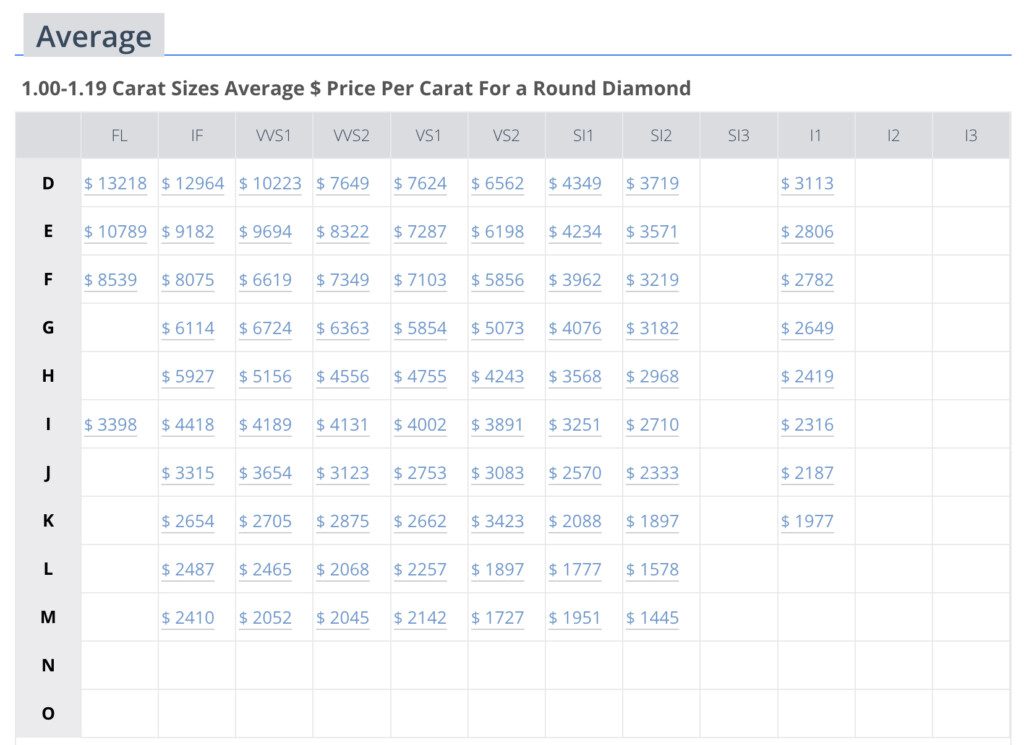
Round Cut
The round cut diamond is the most popular diamond shape, representing approximately 75% of all diamonds sold. It is also generally the most expensive due to its demand and the fact that more rough diamond is lost in the cutting process, which are the portions of the original stone that get removed during the shaping.
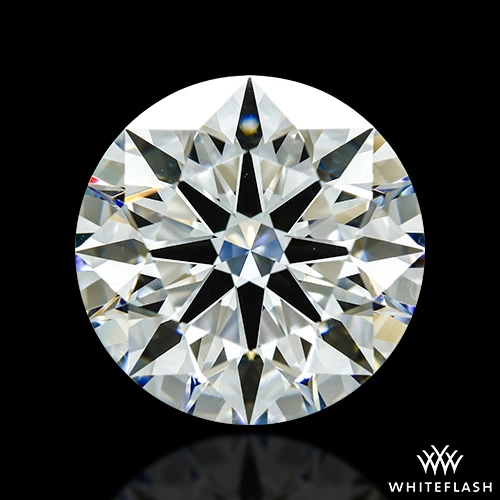
One of the most renowned places to explore and purchase Round Cut Natural & Lab Diamonds is at Whiteflash, which you can visit here.
Princess Cut
This is the second most popular shape globally. The princess cut is traditionally a square shape with sharp, pointed corners. It is less expensive than the round cut because less rough diamond is removed during the cutting process – a win-win for the diamond and the buyer.
Shop Princess Cut Diamonds at PriceScope here.
Oval Cut
The elongated circular shape of the oval cut can create the illusion of greater size. The slender shape can also make the finger of the wearer appear longer and slimmer.
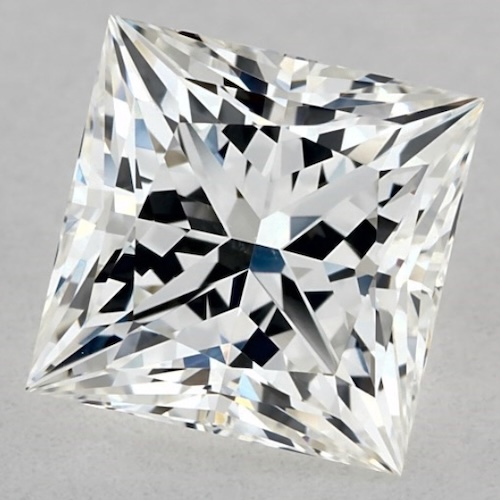
Shop Oval Cut Diamonds at PriceScope here.
Pear Cut
This cut is also known as the teardrop shape. It is both a unique and beautiful style, and is often favored by those who prefer simpler styles, but still want to stand out. It can be worn with the pointed end towards or away from the hand, and the length of the shape can make the fingers appear longer.
Shop Pear Cut Diamonds at PriceScope here.
Cushion Cut
The cushion cut has gained quite a bit of popularity over the past decade. It has a square or rectangular shape with rounded corners, resembling a pillow or ‘cushion,’ hence the name.
Shop Cushion Cut Diamonds at PriceScope here.
Emerald Cut
With this shape, clarity is everything. Due to its large, open table (which is the flat facet on the diamond’s surface), it will more easily highlight any inclusions or blemishes. The elongated shape and step cuts of its facets create a sophisticated, glamorous appearance, and if you find a high clarity grade for this shape, you’re onto a winner.
Shop Emerald Cut Diamonds at PriceScope here.
Asscher Cut
The Asscher cut is a stepped square cut, often called the “square emerald cut.” It has cropped corners and, like the Emerald, really showcases the clarity of the diamond.
Shop Asscher Cut Diamonds at PriceScope here.
Marquise Cut
This football-shaped cut is able to maximize carat weight because of it’s elongated shape, giving the appearance of a much larger diamond. The long, narrow shape can also make fingers look longer and more slender. For a 2.5-carat diamond, this cut could be a real attention-bringer.
Shop Marquise Cut Diamonds at PriceScope here.
Radiant Cut
The Radiant cut combines the Emerald cut’s stylish lines with the round cut’s brilliance. It’s a versatile cut that fits both various ring styles and various personal tastes.
Shop Radiant Cut Diamonds at PriceScope here.
Heart Cut
A less common shape, the heart cut diamond is a symbol of love. The complexity of the shape requires a high degree of skill to ensure the proper symmetry and proportion, so it’s essential to find a reputable jeweler – such as the two we shall link below.
Shop Heart Cut Diamonds at James Allen and Blue Nile.
Why is Cut Shape Important?
The shape of the diamond can significantly influence the aesthetic of your ring. Some shapes can make the diamond appear larger, while others highlight the diamond’s clarity. Conversely, a particular shape for a particular diamond might highlight a blemish that ruins the appearance of the diamond, so if you’re choosing a lower clarity-graded diamond, it’s best to choose a safer cut, such as a Round cut.
Ultimately, the best shape to choose is the one that most appeals to you or your loved one. Check out the popular diamond shapes on the market in real-time – updated monthly here at PriceScope.
Diamond Certification: Should You Consider It?
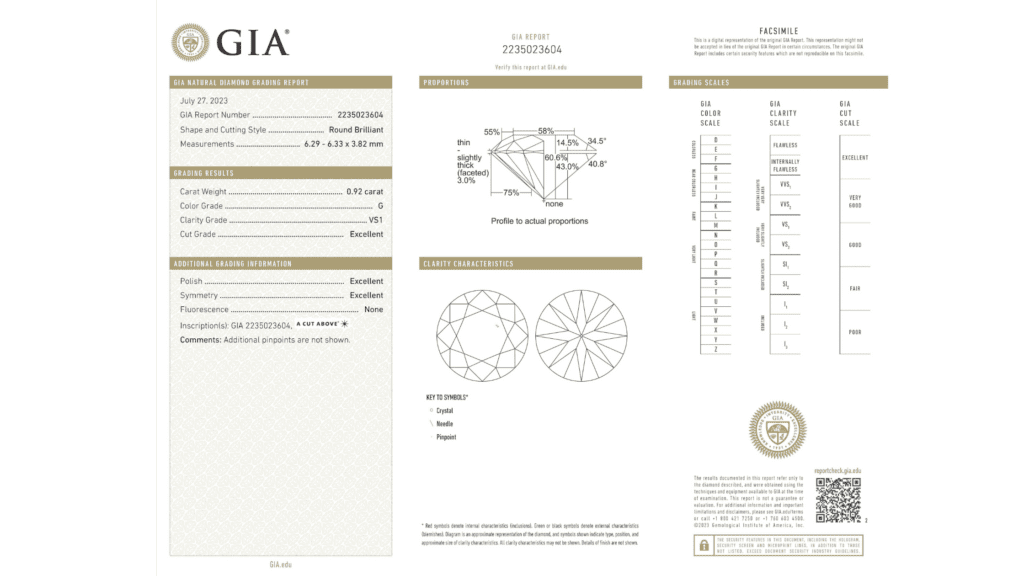
We cannot stress the importance of diamond certification. It is the ultimate protection for buyers, ensuring that what you’re getting is actually what’s being described.
So what does certification include and guarantee?
Authenticity
Certification from a reputable lab, such as the Gemological Institute of America (GIA) or the International Gemological Institute (IGI), guarantees that the diamond is a real diamond and not a look-alike stone such as cubic zirconia or Moissanite.
It also guarantees that a natural diamond is a natural diamond, rather than a synthetic or lab-grown diamond sold as a natural diamond.
Quality Verification
A certified diamond includes a detailed report listing its specifications, such as the 4Cs—Carat, Cut, Color, and Clarity. This document verifies the diamond’s quality and provides transparency about its characteristics, helping you to understand exactly what you’re buying.
This is also important if you ever sell on the diamond, as you’ll be able to accurately describe it to any interested parties.
Value for Money
Certification helps to ensure that you’re paying a fair price for the diamond. If you know the precise quality and characteristics of the diamond, you can compare prices across different sellers and make a better, more informed decision – every time you buy a diamond.
Resale Value
If you ever decide to sell or trade-in your diamond in the future, the certification will play a crucial role. Certified diamonds will typically have higher resale values because the next buyer or jeweler can be confident about the diamond’s quality.
Insurance
With anything you purchase, there’s always the chance of loss, damage, or even theft. In case of these circumstances, insurance companies usually require detailed information about the diamond, which is readily available in the certificate – so keep this! This documentation helps establish the diamond’s value, aiding you in seeking the same value or even a replacement diamond.
But certification doesn’t just provide assurance—it is an absolutely critical tool for comparing diamonds, understanding their worth, and ensuring your investment is sound.
Always ensure the diamond you’re interested in is certified by a reputable institution such as the GIA or the IGI. These organizations are known for their rigorous, industry-leading standards, unbiased evaluations, and consistent and reliable diamond grading.
Lab-Grown 2.5 Carat Diamonds
A 2.5 carat diamond can originate in many places. It can be excavated from the ground, where it has set undisturbed for millenia, or it can be fashioned by human hands using modern technology and cutting edge techniques. The latter is what is referred to as a lab-grown diamond.
The first question you may ask is – are lab-grown diamonds real? The answer is a resounding yes. Lab-grown diamonds are chemically identical to natural diamonds – like a set of twins whose DNA is exactly the same – the only difference is the time it took to make them, and the location they came from.
Lab-grown diamonds take roughly 1-4 weeks to complete, using a sophisticated process of chemical synthesis. They are then cut the same way as natural diamonds, polished the same way, certified the same way, sold the same way, and enjoyed the same way.
When considering a 2.5 carat diamond, price will be a big consideration, and this is where a lab-grown diamond might interest you. Lab-grown diamonds trade for lower prices than their natural counterparts. However, there’s another consideration regarding longevity of value that you might want to think about. Lab-grown diamonds don’t retain their value like natural diamonds, and resale prices (depending on where you’re selling and the current market value) could drop to a fraction of what the diamond was originally bought for.
The upside of the lower value of a lab-grown diamond is that you can purchase an incredibly high-quality diamond that would cost anywhere from three times to six times more if it was a natural diamond.
Take your time to view these lab-grown diamonds from Whiteflash, James Allen, and Adiamor to see if a lab-grown option might appeal to you.
Please find out more about lab-grown diamonds on our extensive guide here.
Our Final Thoughts And Recommendations
Investing in a 2.5-carat diamond is an exciting but also substantial decision. First of all, carat size can be important, but more important is to understand the subtleties of Cut, Clarity, and Color (and Certification). This will ensure you make a well-informed investment, time and time again.
But that isn’t the only actionable insight we have for you:
- A high-quality cut should always be the top priority for a diamond of this carat, as no matter how large the diamond, it will not perform if the cut is not up to scratch.
- Color can be more forgiving in round brilliant cuts, with the color grades of G to H often appearing white when face-up. Elongated or step cuts have the potential of revealing more warmth, so please be aware of this when making your choice.
- Carat weight does not directly reflect the visible spread of a diamond, and so 2.5-carat diamonds can often vary in size.
- Always remember to check for certification: Lab certification from the GIA or IGI can ensure a completely authentic diamond, a wise investment, fair pricing, resale potential, and an ownership period protected by authenticity.
The world of diamonds may appear complex, but with knowledge and a good amount of research, you can navigate your way to finding the perfect 2.5-carat diamond that not only aligns with your style, but also fits your budget. Remember, every diamond has a unique story to tell, and with this guide, you’re one step closer to finding a diamond that tells yours.
After exploring this comprehensive guide on 2.5-carat diamonds, why not browse the high-quality 2.5-carat diamonds offered by our vetted vendors? To simplify your search, click through to the 2.5-carat diamonds offered by Whiteflash, Adiamor, Blue Nile and James Allen.

